Check power protection technology
The power supply shall not only provide stable DC (or AC) voltage in case of load and line changes, system instantaneous changes, noise and other deviations, but also protect itself from temporary and permanent faults (internal or external) to avoid load damage.
1. Overload (overcurrent / short circuit) protection. This includes the classical fuse (fuse connection) to protect the power supply when the load path is short circuited or absorbs excessive current. Many power supplies limit themselves because they can only provide a certain amount of current, so they do not need to use fuses, but they need to be used under supervision. The standard fuse stops the current through the fuse, so it sometimes needs to be replaced manually. This may cause trouble in some cases, but in others. In addition, there are electronic fuses, which can be reset automatically.
2. Current limiting and current turn back protection. This is an extension of overload protection. When the current absorbed by the load from the power supply exceeds the design limit, the current turn back will reduce the output current and related voltage to a value lower than the normal working limit. In extreme cases, when the load is short circuited, the current is limited to a small part of the maximum value, and the output voltage is obviously zero.
As the power is transferred from the off state to the fully on state and then back to the off state, the power will experience different modes. During this period, if the input voltage of the power supply is lower than the minimum value required for normal operation, UVLO can ensure that the power supply is not turned on and provide output.

3. Overvoltage protection (OVP). If the internal fault of the power supply causes the output voltage to rise above the specified maximum value, the OVP will play a role to protect the load from damage. When the voltage exceeds a preset level, the OVP will turn off the power or clamp the output. OVP circuit is usually called crowbar circuit, and its function is the same as placing metal crowbars at both ends of the power output. Crowbar electricity The design of the circuit should preferably be independent of the power supply itself.
One type of crowbar circuit resets only when the power is off. Another type is automatic reset after removing the output voltage fault. The latter type is not a serious power failure, but a short crowbar trip. Although most power supplies now have built-in crowbars, many suppliers provide a small independent crowbar circuit, which can be added to the existing power supply when needed.
4. Thermal overload protection. If the cooling mode of the power supply is not designed properly or cannot be used (such as fan stop, air flow blockage), thermal overload will occur. At this time, the power supply may exceed the rated temperature value, the service life may be greatly shortened, and the fault may occur immediately. The solution is simple: set a temperature sensing circuit inside or near the power supply. If the power supply exceeds the preset limit, put the power supply into static or stop mode. If the temperature drops, some hot melt circuit breakers will automatically restore power, while others will not.
5. Reverse connection protection. Load reverse connection (the positive power output is connected to the load track, and vice versa) reverse connection protection prevents current flow and makes the voltage zero. This protection is particularly popular in applications where the battery is disconnected and reconnected, such as cars and applications where the battery and its connectors are not locked.
Practical protection components include metal oxide varistors (MOVs), positive temperature coefficient (PTC) thermistors, transient voltage suppression (TVS) diodes, gas discharge tubes (GDTs) and polymer PTC recovery fuses.
What to protect, what to prevent, and what types of protection do we need to add to the power supply? As usual, the answer depends on the power supply itself, load and system. From integrated circuits (including converters and regulators) to larger modules and even chassis / open devices, although many power supplies and related functions include some of them, other devices may need to be added.
Shenglan Technology Co., Ltd_ It focuses on the production of electronic connectors and research and development of precision components. Its products are widely used in consumer electronics, new energy vehicles, USB, 5g and other fields. Its industrial lines cover the Pearl River Delta, Southeast Asia and other regions. It has established long-term strategic cooperation relations with well-known enterprises such as Foxconn, Lixun precision, Huawei, Xiaomi, TCL, Hitachi Group, BYD and Great Wall Motors, with IATF 16949, ISO9001 ISO14001, QC080000 and other system certification and product safety certification, and provide professional connection and manufacturing solutions for the industry http://jctc.com.cn/


